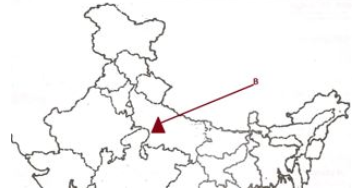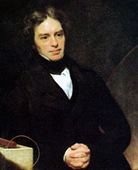CBSE Class 8 History Chapter 7 Important Questions. myCBSEguide has just released Chapter Wise Question Answers for class 8 Social Science. There chapter wise Practice Questions with complete solutions are available for download in myCBSEguide website and mobile app. These Extra Questions with solution are prepared by our team of expert teachers who are teaching grade in CBSE schools for years. There are around 4-5 set of solved History Extra questions from each and every chapter. The students will not miss any concept in these Chapter wise question that are specially designed to tackle Exam. We have taken care of every single concept given in CBSE Class 8 Social Science syllabus and questions are framed as per the latest marking scheme and blue print issued by CBSE for Class 8.
CBSE Class 8 History Practice Questions
History Class 8 Weavers Iron Smelters and Factory Owners Extra Questions
Ch-7 Weavers Iron Smelters and Factory Owners
- From the outline map of India, identify the city marked B, in red triangle, where a mill was established in the United Provinces in the year 1862.

-
Udaipur
-
Surat
-
Ahmedabad
-
Kanpur
-
-
The first cotton mill in the India was established in
-
Madras
-
West Bengal
-
Bombay
-
Gujarat
-
-
Spot from the list given below, the important hand spun material urged by Mahatma Gandhi to use.
-
Khadi
-
Polyster
-
Wool
-
Silk
-
-
Identify this personality based on the clues given. He toured Mysore in 1800 and left an impressionable account of the technique by which Wootz steel was produced.
-
John Fryer
-
Francis Buchanan
-
John Albert de Mandesto
-
Marco Polo
-
-
Identify this legendary scientist and discoverer of electricity and electromagnetism who spent four years studying the properties of Indian Wootz.

-
Humphry Davy
-
Thomas Edison
-
Michael Faraday
-
Isaac Newton
-
-
Match the following:
Column A Column B (i) Arkwright invents the steam engine (a) 1919 (ii) British colonial government buys 90 percent of TISCO steel production (b) 1868 (iii) Charkha put in the flag of Indian National Congress (c) 1786 (iv) Meiji regime assumes power in Japan (d) 1931 - Fill in the blanks with appropriate words to complete each sentence.
- The cotton textile which the Portuguese took back to Europe, along with the spices came to be known as ……….
- The ….. was invented by John Kaye which increased the production of the traditional spindles.
- Weavers often belong to communities that specialized in ……..
- ……. and ……. Emerged as important new centres of weaving in the late 19th century.
- State whether each of the following statements is True or False.
- From the 1850s, British came to be known as the ‘workshop of the world.’
- The invention of spinning jenny and steam engine revolutionized cotton textile weaving in England.
- European trading companies such as the Dutch, the French and the English purchased cotton and silk textiles in India by importing diamond.
- Men were usually involved in the work of spinning.
- The Tata Iron and Steel Company began to produce steel after the First World war.
-
What is the full form of TISCO? When was it set up?
-
How did European trading companies purchase cotton and silk textiles in India?
-
Name the important centre of jamdani weaving?
-
Observe the pictures subsequently and answer the questions that follow:
 Questions:
Questions:- What is it? What design does it carry?
- Why does a line run through the middle?
- Name the two states where these designs were mostly produced.
-
Why did the Indian iron smelting industry decline in the 19th century?
Ch-7 Weavers Iron Smelters and Factory Owners
Answer
-
- Kanpur, Explanation: The first Cotton Textile Mill, the Elgin Mills, was started in 1862 and Muir Mills in 1882, and many others that followed in the next 40 years, such as Victoria Mills.
- Bombay, Explanation: Because it was close to the vast black soil tract of western India where cotton was grown and because it has an important port for the export of raw cotton from India to England and China.
- Khadi, Explanation: Mahatama Gandhi urged people to boycott imported textiles and use hand-spun and hand-woven cloth.Khadi gradually became a symbol of nationalism.
- Francis Buchanan, Explanation: Several European travellers including Francis Buchanan and Voysey from the 17th century onwards observed the manufacture of steel in south India by a crucible process at several locales including Mysore, Malabar and Golconda.
- Michael Faraday, Explanation: Micheal Farraday was an English scientist who contributed to the study of electromagnetism and electrochemistry. His main discoveries include the principles underlying electromagnetic induction, diamagnetism and electrolysis.
- Arkwright invents the steam engine – (c) 1786
- British colonial government buys 90 per cent of TISCO steel production – (a) 1919
- Charkha put in the flag of Indian National Congress – (d) 1931
- Meiji regime assumes power in Japan – (b) 1868
- Calico
- Spinning Jenny
- Weaving
- Sholapur; Madurai
- True,
- True,
- False: European trading companies such as the Dutch, the French and the English purchased cotton and silk textiles in India by importing Silver
- False:Women were usually involved in the work of spinning.
- True,
- False:In 1914 the First World War broke out.The Tata Iron and Steel Company (TISCO) that came up began producing steel in 1912.
- The full form of TISCO is Tata Iron and Steel Company. It was set up in Jamshedpur in 1912 by Jamsetji Tata.
- European trading companies purchased cotton and silk textiles in India by importing silver.
- Dacca in Bengal and Lucknow in the United Provinces (U.P.).
- It is an odhni. It carries bandanna design.
- In this odhni, two tie – and – dye silk pieces are seamed together with gold thread embroidery.
- Rajasthan and Gujarat.
- The Indian iron smelting industry began to decline due to the following reasons:
- The introduction of forest laws demarcated forests as protected and preserved. The smelters now were not able to find wood for charcoal and iron ore for producing iron. Many smelters thus abandoned their work.
- In forests where smelters obtained permission for obtaining iron ore, they had to pay high taxes for each furnace that they used. This led to a substantial decline in their incomes.
- By the nineteenth century, iron and steel began to be imported from Britain. Ironsmiths in India began to use steel imported by Britain for making various articles. Thus, the demand for iron produced by local smelters reduced.
- Smelters also faced competition from the iron and steel industries that began to be set up in the country.
Chapter Wise Extra Questions for Class 8 Social Science

Test Generator
Create question paper PDF and online tests with your own name & logo in minutes.
Create Now
Learn8 App
Practice unlimited questions for Entrance tests & government job exams at ₹99 only
Install Now